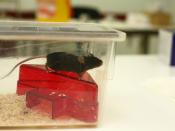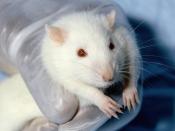Animal testing is not a new thing. For many centuries scientists and testers in research have used animals of all kinds. Most of the animals are small ones like rodents: rats, mice, hamsters and gerbils. Some dogs, cats and a variety of goats, monkeys, and rabbits have also been used. The animal rights issue is an emotional one. For decades the value of animal research has been grossly overrated. Although researchers claim that they depend on animal test data to achieve medical advances, we should demand other means of research and there should be laws assuring a minimum level of animal protection because testing on animals is cruel, inhumane, and often unnecessary. The American Medical Association has stated that it believes that research-involving animals is essential to maintaining and improving the health of human beings. They point out that all advances in medical science in the 20th century, from antibiotics to organ transplants, has been achieved either directly or indirectly through the use of animals in laboratory experiments.
Arguments for animal experimentation may question the morality, necessity, and validity of these studies. The moral issue on animal experimentations concerns the need to protect human life and to improve the quality of life. The gains in human health and well being outweigh the cost in animal suffering (which nonetheless should be kept to a minimum), in this viewpoint. It would be immoral to conduct such tests on humans, and so animals serve as our stand-ins for many kinds of testing and research. Those who support animal testing may care deeply about animals but don't place them on an equal status with humans.
Research on animals may be deemed necessary for a variety of reasons to develop vaccines and treatments and cures for diseases, to ensure that new products are safe...


